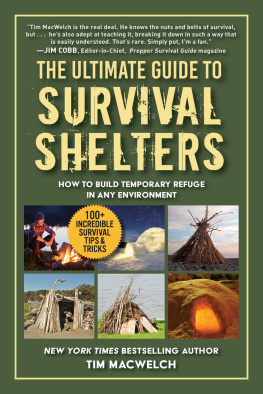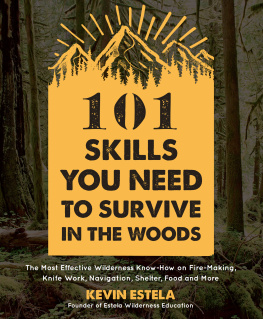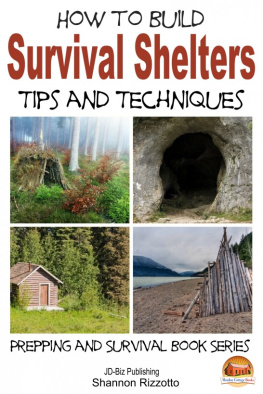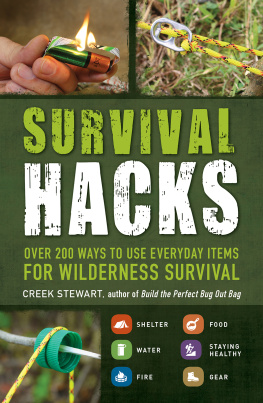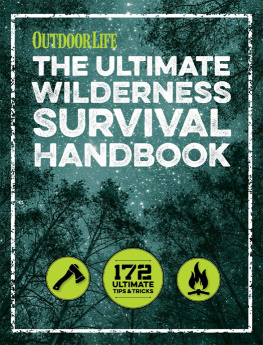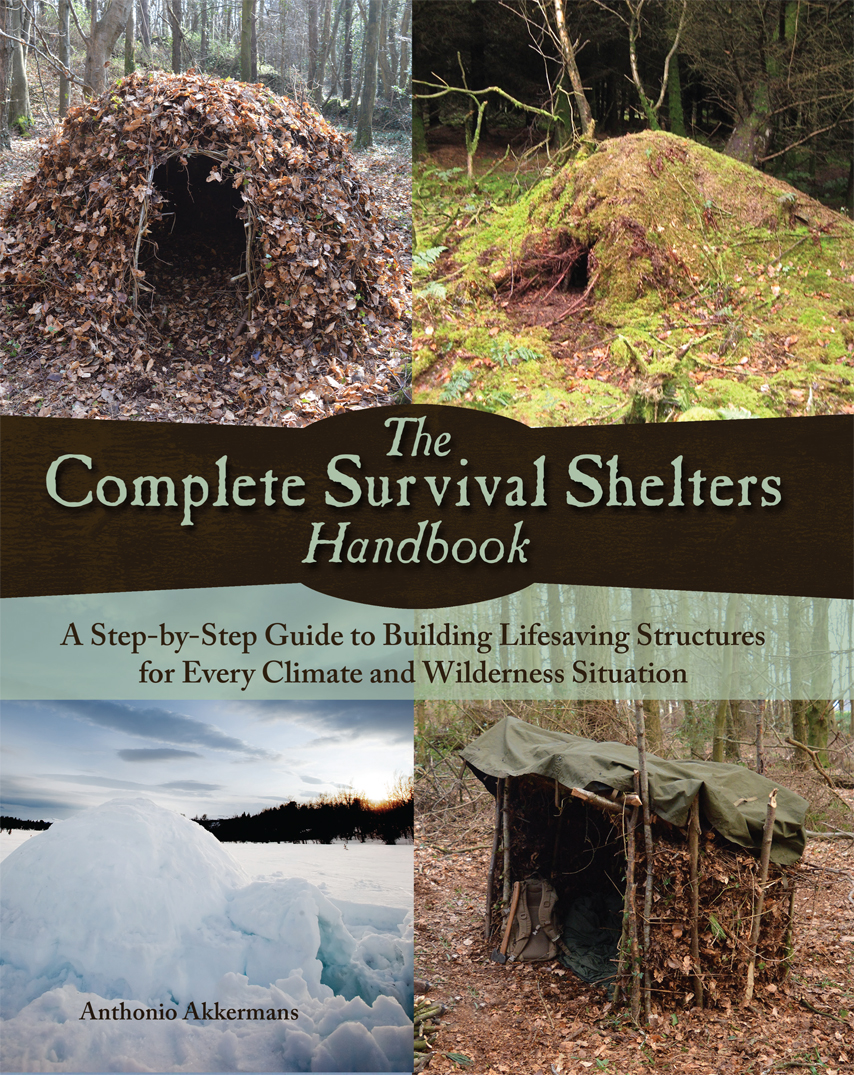
Text copyright 2015 Anthonio Akkermans. Photos copyright 2015 Anthonio Akkermans except as noted below. Design and concept copyright 2015 Ulysses Press and its licensors. All rights reserved. Any unauthorized duplication in whole or in part or dissemination of this edition by any means (including but not limited to photocopying, electronic devices, digital versions, and the Internet) will be prosecuted to the fullest extent of the law.
Published in the US by:
Ulysses Press
P.O. Box 3440
Berkeley, CA 94703
www.ulyssespress.com
ISBN: 978-1-61243-512-1
Library of Congress Control Number: 2015937555
10 9 8 7 6 5 4 3 2 1
Acquisitions editor: Kelly Reed
Project editor: Alice Riegert
Managing editor: Claire Chun
Editor: Renee Rutledge
Proofreader: Nancy Bell
Index: Sayre Van Young
Cover design: what!design @ whatweb.com
Cover photos: Anthonio Akkermans except snow shelter Tyler Olson/shutterstock.com
Interior design and layout: Jake Flaherty and what!design @ whatweb.com
Distributed by Publishers Group West
PLEASE NOTE: This book is independently authored and published and no sponsorship or endorsement of this book by, and no affiliation with, any trademarked events, brands or other products mentioned or pictured within is claimed or suggested. All trademarks that appear in this book belong to their respective owners and are used here for informational purposes only. The author and publisher encourage readers to patronize the quality events, brands and other products mentioned and pictured in this book.
Contents
Guide
This is a book about shelter, a subject regarded as the highest human priority both in survival situations and modern life. In survival and bushcraft books covering the four basic human necessities (shelter, water, food and fire), shelter will generally be the first topic covered in depth. This is because you can often survive a few days without water, fire or food, but a lack of shelter can kill you within days, hours or even, in some cases, minutes.
The human body on its own is surprisingly badly adapted to survive the rigors of life in all but the balmiest of climes without help to regulate its own temperature. Modern aid and relief agencies recognize this fact by ensuring people in need immediately receive a form of shelter, whether during a natural disaster or refugee crisis.
During my years of involvement with the survival and primitive skills industry, I have often observed people wrongly prioritizing other needs above shelter. There seems to be a particular obsession with lighting a fire first. I have seen people spend hours upon hours failing to get a fire going (lighting a fire without tools or accelerants is a difficult skill, especially during inclement weather), only to find themselves with too little daylight left to construct some form of shelter, resulting in a miserable night without shelter, fire, food or water.
I see the lure of starting a fire. Theres nothing quite as comfortable or evocative of times gone by as spending the night in front of a blazing fire with nothing but stars overhead. Though this notion may be romantic, it is also short-sighted. The fire may be hard to get going, draining limited energy reserves. Presuming it gets lit, it will require large amounts of fuel to last through the night (requiring more energy to gather) as well as a constant sense of awareness of when to add more wood to the fire, allowing you no more than a short slumber now and again, interrupted by regular panicked attempts to revive the inevitably dying fire. Spending the night with only a fire to protect you from the elements soon becomes a draining chore, depriving your body and mind of the rest, which is so undervalued yet incredibly important in a survival setting.

The Benefits of Shelters
Shelter-building may be a less glamorous skill than hunting for food or lighting that fire, but a good shelter will offer you many benefits, some of which may not be apparent at first:
The shelter will protect you from the elements, whether they be cold, wet or hot. A good shelter will be able to protect you from the lowest temperatures and the heaviest downpours. Just as the shelter will protect you from the weather, it will also serve to protect you from potentially dangerous animals living nearby.
Your shelter will give you a place you can call home. A place to return to from your forays. A base to gather yourself together, and a focal point for your day-to-day life. It will allow you to focus on other activities, knowing that you have a refuge to return to.
Your shelter has the ability to anchor you mentally. How can you be truly lost in a survival scenario when you have a shelter to house you and your possessions? A solid shelter is a tremendous tool to help you retain or regain a sense of control in unexpected scenarios. It can give you a feeling of well-being and increase your morale.
A shelter will help attract potential rescuers in a survival setting by enlarging your footprint in the area when needed. Conversely, a well-designed shelter can lower your visibility where required, giving you a place to store valuable equipment and rest in safety.
Shelters may be built using only natural materials without any need for tools or modern equipment, whereas many other skills require either tools or handmade resources. (Lighting a fire using the bow drill method, for instance, requires the use of a sturdy string and a knife to carve the pieces.)
Shelter-building uses mostly gross motor skills. You may be freezing with stiff fingers, but you should still be able to construct a decent shelter. Most other survival skills require fine motor skills and dexterity.
Shelter-building is a relatively easy skill to learn. By learning and understanding the principles, you can adjust your approach to suit most any environment.
This last point has an enormous bearing on this book. Of course, I will not be able to cover every conceivable type of shelter in a book such as this, let alone cover each in sufficient detail to allow you to build them at home. Instead, I chose shelters that would demonstrate the range of shelters available, and more importantly, the principles behind shelter-building. By showing you the principles at work, you will be able to come up with any type of shelter at all, perfectly suited to the environment you find yourself in as well as your own level of skill, energy and endurance.
Also, I feel that shelter-building in a survival setting (whether self-imposed or not) is in a constant state of evolution. You may start with the most basic of shelters, but over time, you may well be adding on to the basic structure to improve it, or perhaps replace it altogether. You may start with a simple lean-to, perhaps creating walls a day later or building a second one on yet another day. You might even decide to enclose your fire altogether with various structures on all sides.
Learning individual types of shelter is not conducive to promoting a fluid evolutionary improvement of your campsite. Knowledge of the principles at work is needed. With this knowledge, the resources of your shelter site and time available to you will become your only limits.
Except in hot weather, as discussed further down, the main purpose of a shelter is preventing excessive heat loss. Heat can be lost through conduction when your body is touching a material that is colder than you. This can happen when youre lying directly on cold ground, are wearing wet clothes or are covered in damp leaves.








